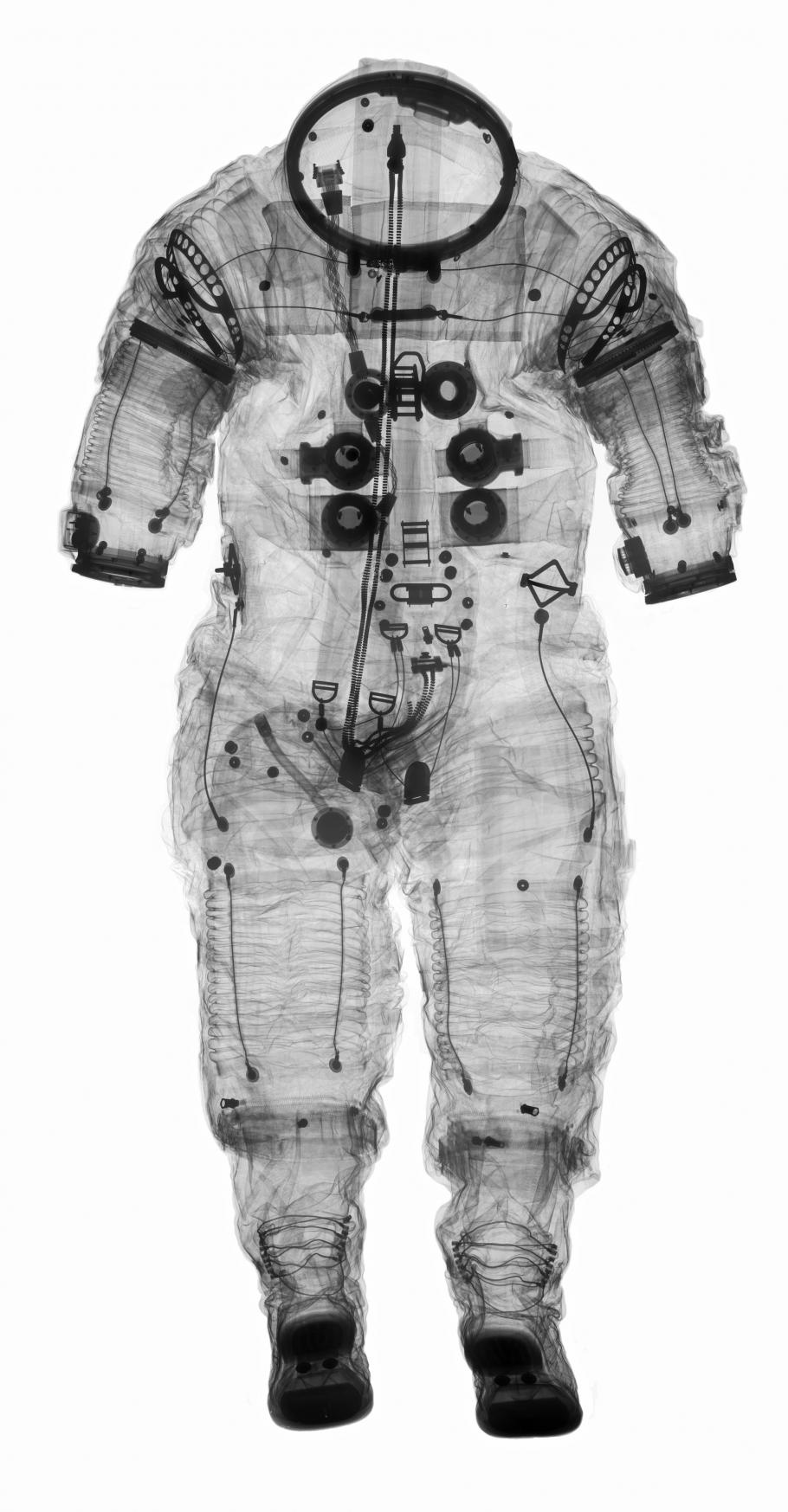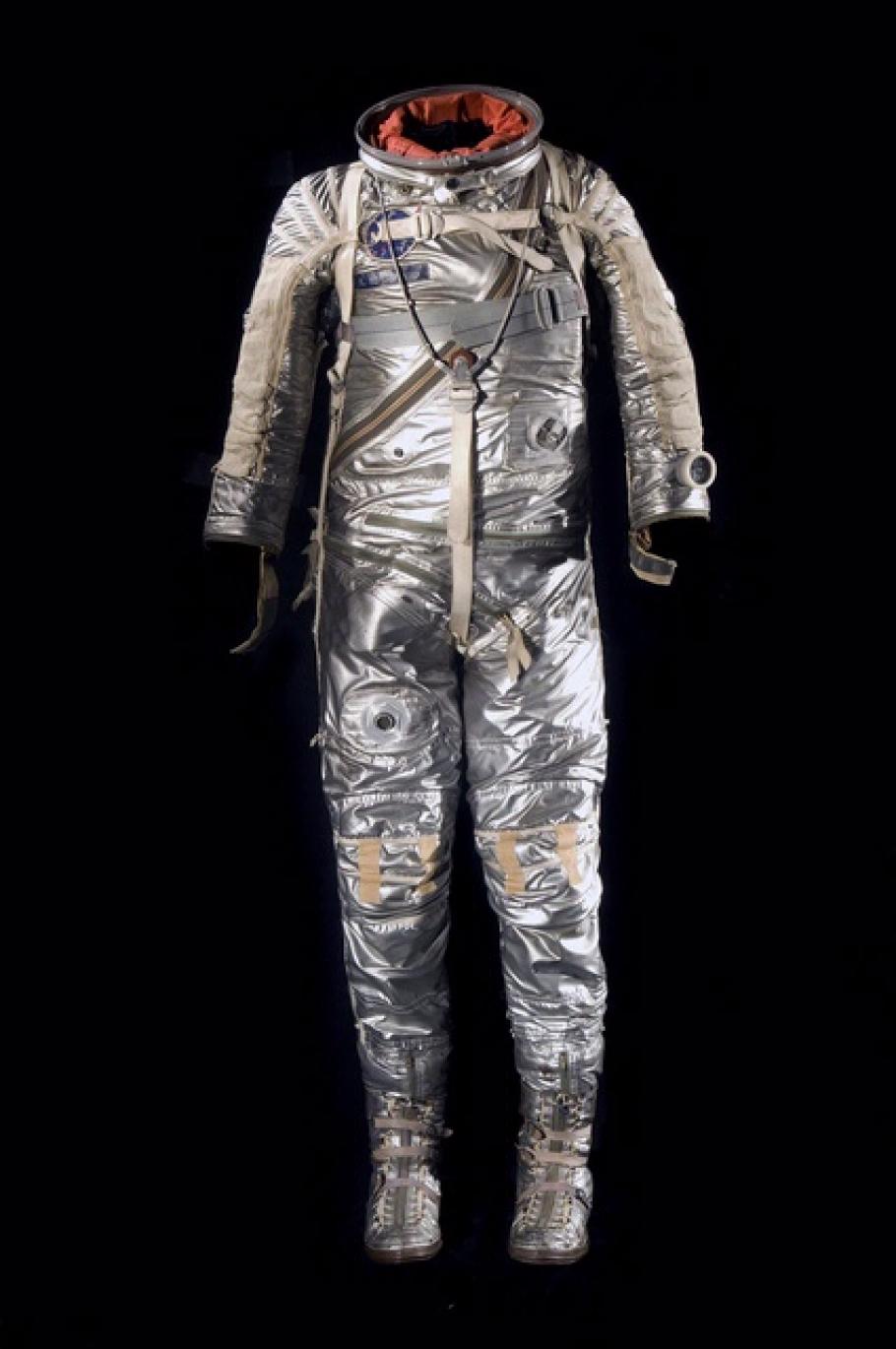It was about five years ago that Museum specialist Amanda Young announced that she had found a publisher, Powerhouse, for her book on the Museum's collection of spacesuits. The book features the photographs of Mark Avino and the x-rays of many of the spacesuits in the collection that he and Roland Cunningham had created and assembled. The book represented an overview of Amanda’s work on the largest collection of spacesuits in the world. I am confident in that assessment as my specialty is Russia and the USSR and I have seen the only other museum collection that rivals it outside Moscow. Amanda also announced that she was retiring as soon as the book came out and that, oh, by the way, the Smithsonian Traveling Exhibition Service (SITES) wanted to do a traveling show based on the book. I had just finished my dissertation and had agreed to take on the collection. I brushed aside any concerns of the additional burden of a traveling exhibit with no inkling of what such work would entail.
Astronaut Alan Bean wore this A7-LB suit on the 1973 Skylab 3 mission. Bean logged 1,671 hours and 45 minutes in space, including more than 10 hours of EVA (extra vehicular activity).
As any curator knows a book and an exhibition are not the same thing. The latter requires objects, while the former is satisfied with illustrations. Of course, SITES’s first question about the exhibit was would they be able to borrow a spacesuit to travel with the exhibit. The answer was no. As Amanda explained in the book and the opening panels explain in the exhibit, spacesuits, built to withstand the harsh conditions of space for a short period of time, are made of a combination of materials that require strict handling, temperature, and humidity controls for preservation over the decades. With that answer, the SITES team swung into action, using the photographs and x-rays as objects in an exhibit on spacesuits. Project manager Devra Wexler developed a script that used preservation as one of its main themes and Registrar Viki Possoff incorporated ten small National Air and Space Museum items and a NASA replica suit into the exhibition. This show uses Mark Avino's photographs and x-rays both as the artwork they are and as surrogates to tell the story of the history and preservation of the Museum’s spacesuit collection.
An x-ray of Alan Shepard’s Apollo 14 spacesuit allows curators and conservators to “see” inside space clothing—a task that had previously been done by peering through the neck or the wrist with a flashlight.
Beyond the production of the exhibit, SITES worked with DuPont, which had made many of the layers that shielded the Apollo astronauts, to arrange sponsorship of the show. Once the SITES exhibit was completed and about to open at its first venue in at the Chicago Museum of Science and Industry, the National Air and Space Museum and SITES presented a kick-off event in November 2010, sponsored by DuPont. The event covered the history, development, use and materials of the Apollo spacesuit. The evening featured talks by Vlodek Gabara of DuPont on the textiles of the Apollo spacesuits; Joseph Kosmo, a NASA spacesuit engineer for 50 years, who spoke on the Apollo suit requirements from the NASA perspective; astronaut Joseph Kerwin on his role testing, wearing and making sure that the suits worked and, of course, Amanda Young on preserving these national treasures after use. This framework of materials, development, use and preservation defines the exhibit.
Here is what you will see in the exhibit. As I said before, there are no real spacesuits in the exhibit. Suits from the national collection are far too fragile to travel throughout the country. But in Suited for Space, Mark Avino’s artistry has brought out the personalities of each suit. The x-rays allow the visitors to see beyond what is visible to the naked eye, through the protective layers of the suit, to see the complex systems embedded inside. As previously mentioned, there are ten items from the collection in the exhibit. We have a pre-human spaceflight Mark IV Helmet from the early days. From Apollo 11 we have on display: a Biobelt Pouch, a Pressure Suit Oxygen Coupler, and a Pressure Suit Purge Plug. We also have examples of the iconic Apollo artifacts including an A7-L Bubble Helmet, a Lunar Overshoe that was used for training and a Left EVA Glove that astronaut Vance Brand used for training. And, to combine the discussion of bodily functions with museum preservation in a unique and surprising way, we have included an In-Suit Drinking Device, an Apollo Fecal Collection Assembly and a Urine Collection and Transfer Assembly. The replica Apollo suit that NASA has generously loaned for this exhibition allows our visitors to place each of these objects into context. Through rare and original photography, including unique, new x-ray images of the interiors of the spacesuits, the exhibit reveals how the modern technological marvel that is the spacesuit enables astronauts to live and work in space. This exhibit reveals the remarkable creativity and determination of the extraordinary few who ventured into space, as it highlights and showcases the brilliant ingenuity of the hundreds more who worked tirelessly—and often anonymously—to get them there. The show follows the chronology of American human spaceflight, through Mercury, Gemini, and Apollo. The show also includes examples of spacesuits that did not fly, including prototype, contract, and advanced spacesuits that were never meant to fly in space, but to demonstrate technological principles here on Earth. And it intrigues us with an image of a suit recently under development for human missions to lunar bases, Mars, and beyond.
Alan B. Shepard, one of the original “Mercury 7,” wore this suit on the first flight of an American astronaut in 1961.
I would like to point out that this exhibit is only a teaser to our visitors and all those interested in spacesuit development. It is our hope that in the future, we will be able to replicate closely the storage conditions for our suits into displays and will be able to make use of new imaging technologies for research and understanding. Our collection is precious, but as we learn more about the maintenance of the materials that comprise the suits, we hope to master increasingly sophisticated ways to display our collections so that audiences throughout the world can share them as well as their photographs and x-rays.



